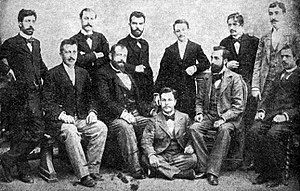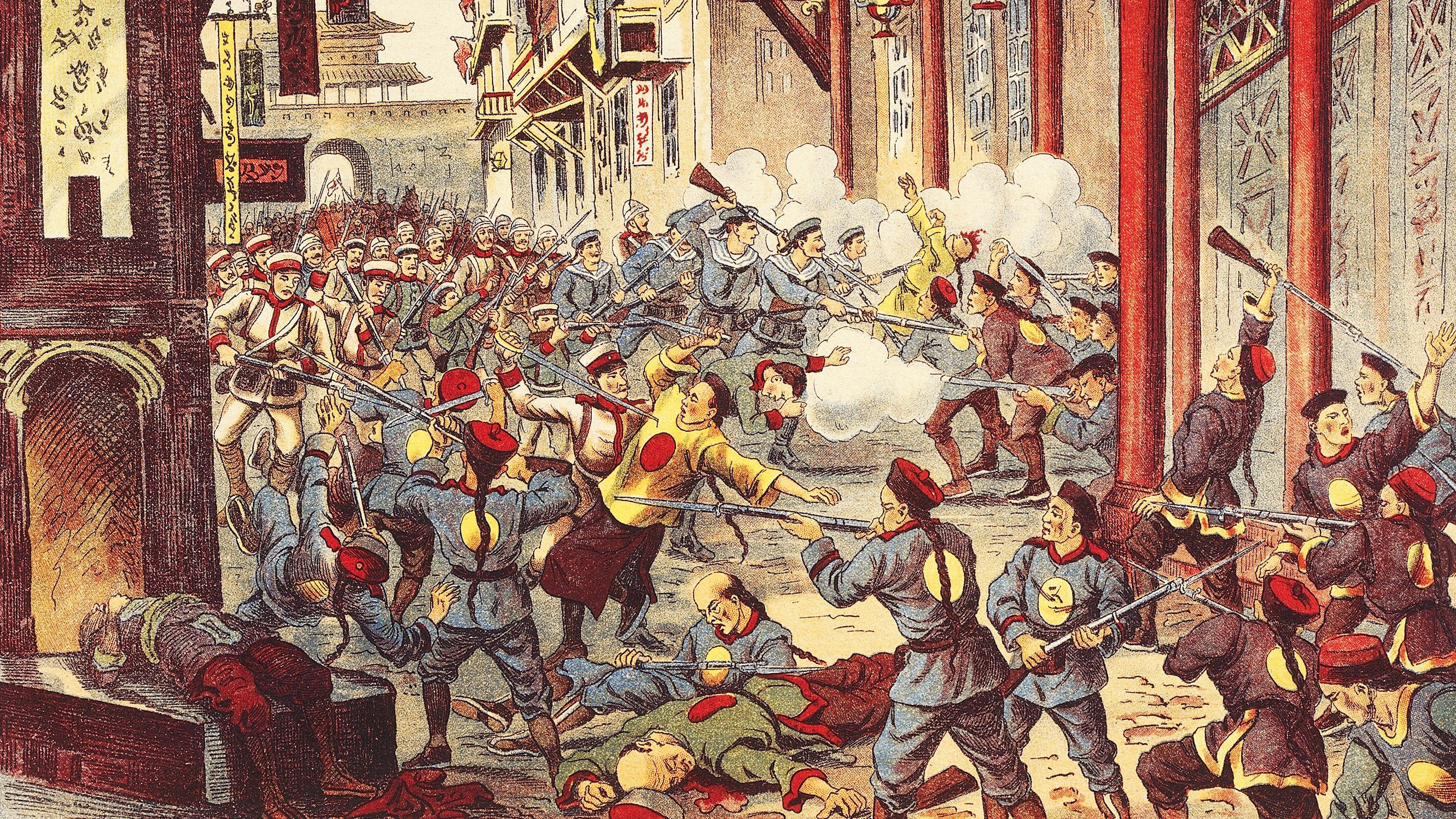Jed Quiaoit
dylan_black_2025
AP World History: Modern 🌍
577 resourcesSee Units
Global Balance of Power
During the early 20th century, the Western Hemisphere was dominated by a few major powers, including Great Britain, France, and the Netherlands, due in large part to the impact of industrialization and the expansion of their overseas colonies. These countries played a dominant role in the global political order, exerting influence and control over many other regions around the world.
At the same time, the traditional land empires of the Ottoman, Austro-Hungarian, Russian, and Qing dynasties were beginning to decline, as new powers emerged on the global stage. Japan, following the Meiji Restoration of 1868, underwent a rapid modernization and industrialization process, becoming a major economic and military power in the region. Similarly, the United States, having recently acquired the Philippines, Puerto Rico, and Guam as territories, was also rising as a major global player.
Overall, the early 20th century was marked by significant shifts in the global balance of power, with Western powers consolidating their dominance and new players emerging as major actors on the world stage. This shift in powers drove much of the political, cultural, and economic action of the 20th century, as the Western World continued their domination.
Collapse of Empires
The Ottoman Empire
During the late 19th and early 20th century, many of the long-lasting land-based empires we've come to know throughout AP World fell. For example, the Ottoman Empire had been experiencing significant struggles since imperialism began rearing its head. In response to these challenges, the Ottoman authorities implemented a series of reforms known as the Tanzimat Reforms, which aimed to modernize and westernize the empire in order to better defend against external threats.
The Tanzimat Reforms included measures such as the abolition of the slave trade, the introduction of a new legal code based on European models, and the establishment of a centralized bureaucracy. These reforms were seen as an attempt to catch up with the European powers and maintain the Ottoman Empire's position as a major player on the global stage.
However, the Tanzimat Reforms were not universally successful. Many Ottoman subjects resisted the westernization of their society, and the reforms did not address the root causes of the empire's decline, such as political corruption and economic mismanagement.
In 1908, a group of young, reform-minded Ottoman intellectuals known as the Young Turks launched a revolution, calling for further reforms and a more representative government. The Young Turks were successful in overthrowing the Ottoman government and implementing a series of democratic reforms, including the introduction of a parliamentary system and the granting of universal suffrage. By this point, the Ottoman Empire was hardly an empire, but had moved more towards a state. The Ottoman Empire would formally fall and become Turkey in the 1920s after their defeat in World War I.

Qing China
The Qing Dynasty, which ruled China for more than three centuries, faced significant challenges in the 19th and early 20th centuries as the country struggled to modernize and defend itself against foreign imperialism. In response, the Qing authorities launched the Self-Strengthening movement in the 1860s, which aimed to modernize and industrialize China in order to better defend against external threats.
The Self-Strengthening movement included measures such as the establishment of modern factories, the construction of railroads, and the adoption of western-style education and military training. However, these efforts ultimately failed to achieve their goals, as the Qing government was unable to effectively implement these reforms and faced significant resistance from traditionalist elements within Chinese society. Chinese society eventually fell into a consistent state of rebellion, first in the Taiping Rebellion in 1850 and then the Boxer Rebellion in 1899.
The Taiping Rebellion was a massive civil war that lasted from 1850 to 1864, in which a peasant rebellion led by Hong Xiuquan sought to overthrow the Qing Dynasty and establish a new dynasty with a mixture of Christian and traditional Chinese beliefs. The Taiping Rebellion resulted in the deaths of tens of millions of people, and while the Qing Dynasty eventually put down the rebellion, it was weakened in the process.
The Boxer Rebellion was an anti-foreign that took place in China from 1899 to 1901. Even though it was ultimately defeated by a coalition of foreign powers, it weakened the Qing Dynasty and contributed to the eventual downfall of the dynasty in 1911.

The Boxer Rebellion
In 1911, a revolution broke out in China, led by the Nationalist Party (Guomindang) and supported by various other groups. The revolution was successful in overthrowing the Qing Dynasty and establishing a republic, marking the end of more than two thousand years of imperial rule in China.
The Qing Dynasty's fall was the result of a combination of internal and external factors. The dynasty's inability to effectively modernize and defend against foreign imperialism, as well as widespread discontent among the Chinese people, contributed to its collapse. The Chinese Revolution of 1911 was a turning point in Chinese history, paving the way for the establishment of the Republic of China and the eventual rise of the Communist Party under Mao Zedong in the 20th century.
Check out a comparison of the Tanzimat Reforms and the Self-Strengthening Movement here from Ben Freeman!
Russia and the Russian Revolution
Russia, like many other powers in the 19th and early 20th centuries, underwent a process of industrialization in an effort to modernize and become a major player on the global stage. The Russian Empire made significant strides in industrialization, building factories, railroads, and other infrastructure projects, and expanding its overseas empire.
However, Russia also faced significant challenges as it attempted to industrialize and modernize. The country was plagued by political instability, economic mismanagement, and widespread social unrest, which hindered its efforts to catch up with the more advanced European powers.
In the early 20th century, Russia's weaknesses were exposed in the Russo-Japanese War, in which it suffered a crushing defeat at the hands of Japan. The war was a major blow to Russian prestige and highlighted the country's inability to defend itself against external threats. This lead to the Russian Revolution of 1905, weakening the empire and establishing the Duma, a republican style parliament.
In 1917, the Russian Revolution broke out, leading to the overthrow of the Russian Empire and the establishment of the Soviet Union. The Russian Revolution was the result of decades of social, economic, and political unrest, and marked a major turning point in Russian history. The fall of the Russian Empire and the Russian Revolution had significant consequences for the global balance of power, as the Soviet Union emerged as a major player on the world stage.
Activity 1: From Empire to Nation
Activity 1: From Empire to Nation. | See if you can match the former empire to its 20th century counterpart! |
|
|
🎥Watch: WHAP -World Wars in World History
🏆Trivia: WHAP -World Wars in World History
🎥Watch: WHAP - Unit 7 Review: Causation in Global Conflict
🏆Trivia: WHAP - Causation in Global Conflict
ANSWERS - Activity 1: From Empire to Nation
(1) Soviet Union --- B. Russia
(2) Mughal Empire --- D. India
(3) Qing Dynasty --- A. China
(4) Ottoman Empire --- C. Turkey
Browse Study Guides By Unit
🐎Unit 1 – The Global Tapestry, 1200-1450
🐫Unit 2 – Networks of Exchange, 1200-1450
🕌Unit 3 – Land-Based Empires, 1450-1750
🍕Unit 4 – Transoceanic Interactions, 1450-1750
✊🏽Unit 5 – Revolutions, 1750-1900
🚂Unit 6 – Consequences of Industrialization, 1750-1900
💣Unit 7 – Global Conflict, 1900-Present
🥶Unit 8 – Cold War & Decolonization, 1900-Present
✈️Unit 9 – Globalization, 1900-Present
✏️Frequently Asked Questions
🤔Exam Skills
👉🏼Subject Guides
📝AMSCO Notes

Fiveable
Resources
© 2025 Fiveable Inc. All rights reserved.